|
|
|
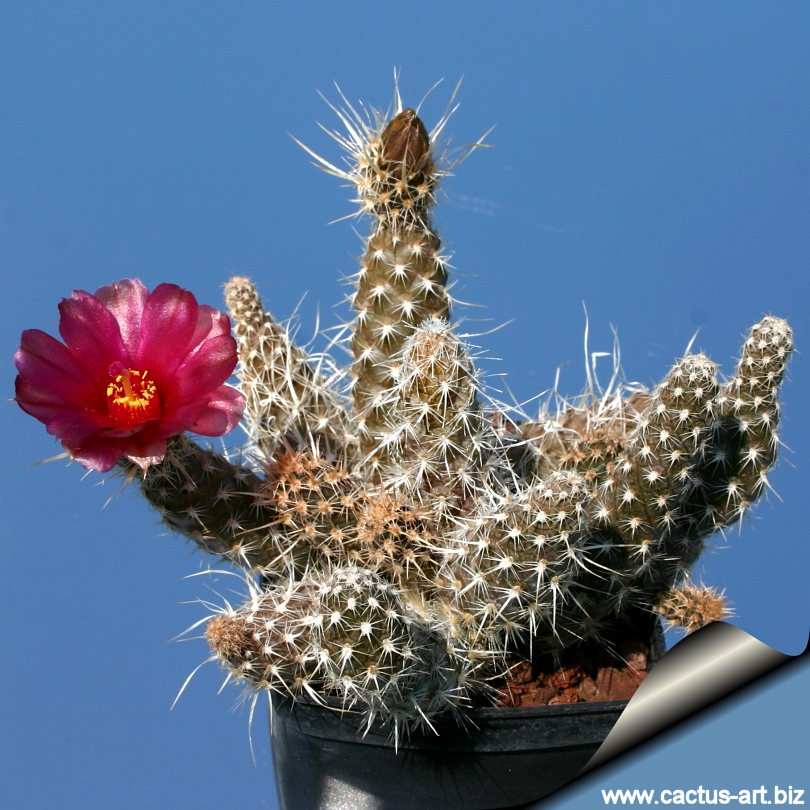
The beautiful flowers may be yellow, yellow-copper, brownish or dull
purple,
and appear at the
apex of young
stems.
|
Description :
It is a
geophyte cactus with a long
underground tap-root,
and deciduous spreading or erect branches, somewhat reminiscent
of Opuntia whipplei.
Some consider Pterocactus fischeri just a variety of Pt.
australis.
Stem:
Thin, cylindrical, more or less tuberculate (tubercles as
broad as they are
long, arranged in spirals), segment unbranched usually arising
from the root-stock (or rarely joined), they are green to brown, up to 15
cm long (but usually less than 10 cm long) and 1-1,5 cm in diameter.
Root: Strong, napiform, very long, cream-coloured.
Areoles: Somewhat woolly, with many yellowish glochids, 2-4
mm long.
Leaves: Minute, that (like in all Pterocactus) fall away early.
|
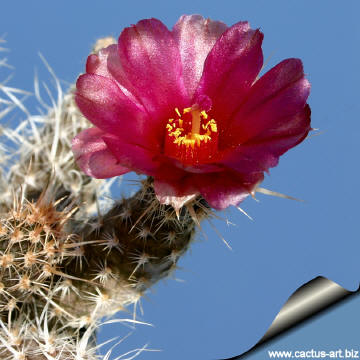 |
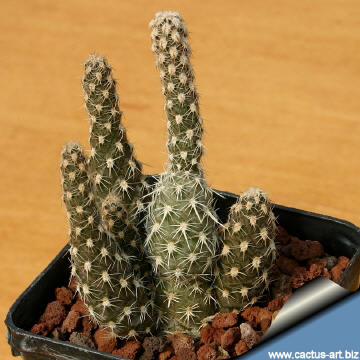 |
|
The central spines
are papery, pointed upwards and grow only on the top of the new shoots
and in the floral tube portion.
Central spines: About 4, 1-5 cm long, ± flattened,
papyraceous,
pointed upwards only on the top of
a
new segment, very bright, brown
or blackish, with a yellowish tip.
Radial spines:
Spreading, 12 or more, up to 6 mm long, fine, setaceous, whitish.
Flowers: Diurnal, yellow, yellow-copper, brownish or dull purple,
with a red stigma up to 2,5 cm in diameter, growing apically at the tip
of new stems. Without a clear floral tube, distinguishable and almost
continuous with the stem.
Blooming season: Summer.
Fruit: Dry, 2-2,5cm in diameter, strongly tuberculate,
dehiscing
transversally in the upper part,
opening up like a cap and setting the seed free.
Seed: Typical of the genus, winged,
with a strongly flattened
aril; uneven on its
periphery.
Like
trees that lose their leaves
in autumn,
the pterocati lose annually
their aerial parts
(segments) in a controlled way using a layer of bark
to seal the subterranean, living root-stock or keep their branches alive
until harsh conditions kill them.
Then the grower
throws the plants
out, not realizing that the root is still healthy.
The best thing to do
when pterocati begin to dye back is to stop watering them,
and let them
stay dry and dormant. A few months
later they will send
up a shoot on
their own. When that shoot appears, resume watering.

 |
|
Advertising
|
|
|
|
Family:
Cactaceae (Cactus
Family)
Scientific name: Pterocactus
fischeri
Britton &
Rose, 1914
Origin:
Endemic to Argentina
(it
ranges from central Neuquén into southern Mendoza).
Conservation status: Listed in
CITES appendix 2.
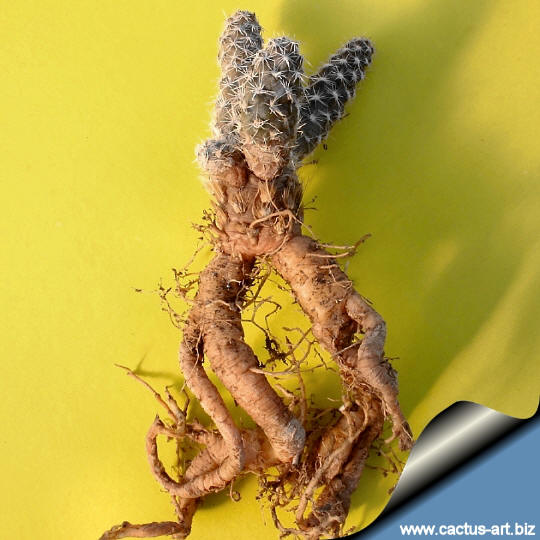
The extremely long tuberous root.
|
|
|
|
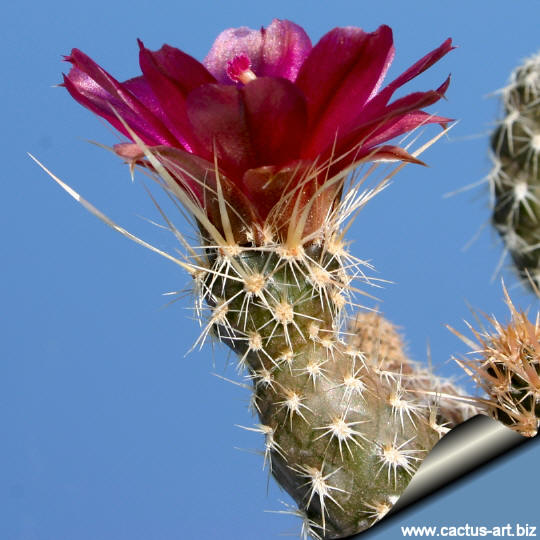
The
flowers forms
apically at the tip of
stems.
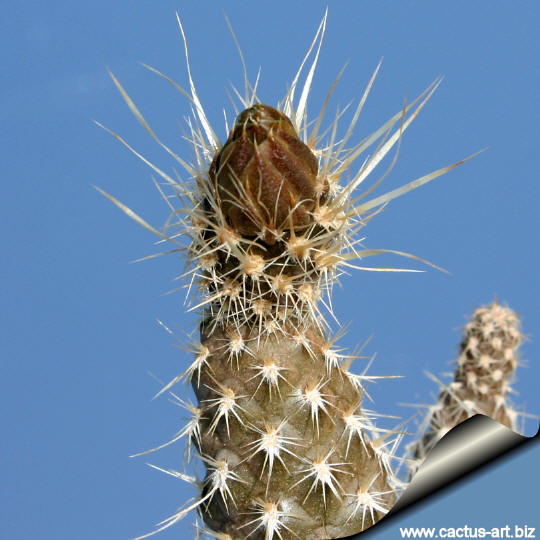
|
|
Cultivation: Pterocacti are
easy to grow, provided they are kept cold, but dry during autumn and
winter. It is essential to give full sun; otherwise they will
become atypical. If grown in full sun, the new growth will flower
profusely in spring and summer.
Most of the slender stems become detached during winter but some
advise (to help plant) pruning all the top growth in autumn, to encourage
it to produce stems with terminal flowers in the spring.
Reproduction: Seeds/Cuttings
|
|